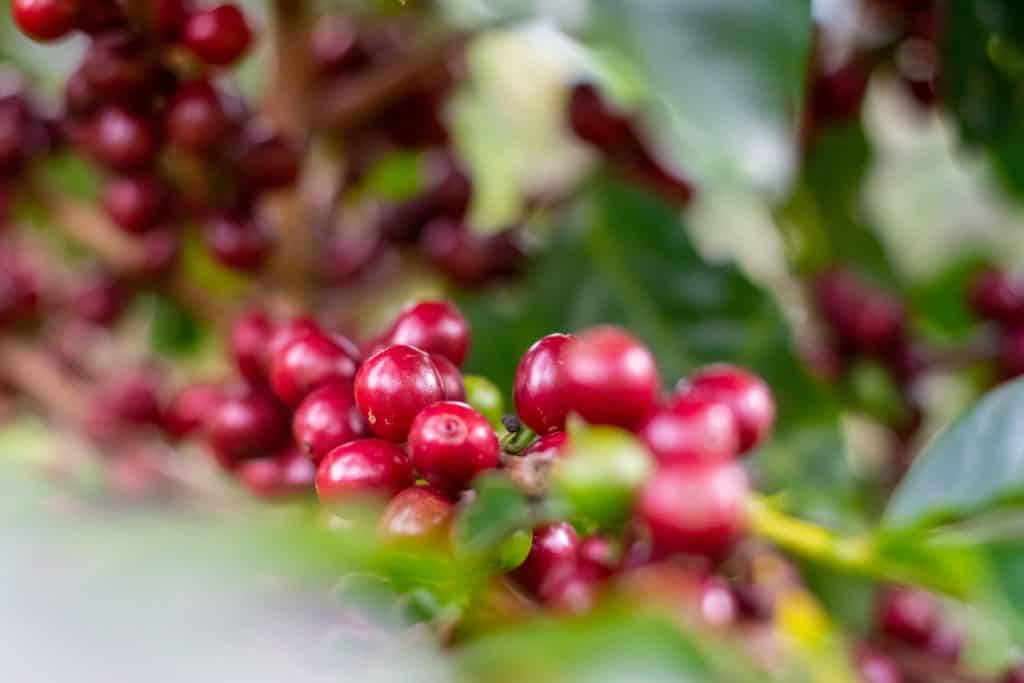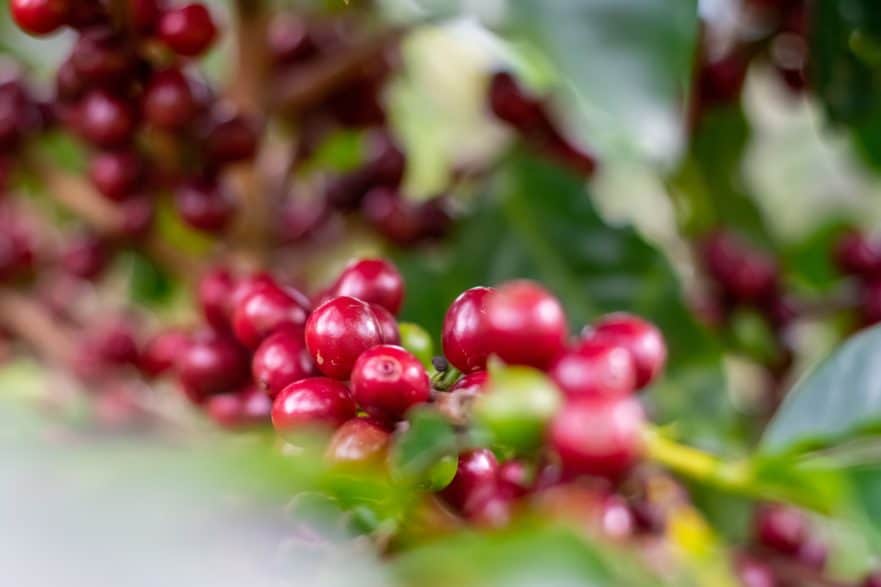
Brazil dominates coffee production, churning out roughly a third of the global supply each year. Specialty grades keep rising in the mix as more farms focus on quality. Coffee lovers turn to Brazilian beans for their reliable profiles and fair prices.
We’ll cover what fuels this appeal, from historical roots and regional highlights to the traits that make them stand out. If your daily brew often hails from Brazil, here’s why it fits so well in your routine.
History and Production Breakdown
Coffee arrived in Brazil back in 1727, when Francisco de Melo Palheta smuggled seeds from French Guiana. It began modestly in the north but surged in the south during the 1800s. Estates in Rio de Janeiro, São Paulo, and Minas Gerais made coffee the nation’s key export. By the mid-1800s, Brazil supplied a big chunk of the world’s coffee, shifting from slave labor to immigrant workers after abolition in 1888.
A later boom in the late 1800s and early 1900s locked in Brazil’s position, with policies to stabilize prices. The country has held the top spot as the world’s largest producer for over 150 years. Arabica accounts for most of the output, around 70%, with robusta filling the rest. This backstory laid the groundwork for specialty coffee—beans scoring 80 or higher for taste, aroma, and overall excellence.
Production covers vast areas, about 2.2 million hectares dedicated to coffee, mostly in the southeast. Weather like droughts or frosts can affect yields, but improved techniques keep things steady. Brazil has over 30 coffee-producing regions, many with geographical indications that protect their unique traits.
Minas Gerais tops the list, producing about half the total. Its elevated terrain yields beans with gentle acidity and nutty undertones. Espírito Santo excels in robusta, known for bold, earthy notes. Areas like São Paulo, Bahia, and Rondônia bring diversity. Regions define profiles: Minas offers chocolate notes, Bahia brighter fruit, São Paulo sweet balance.
Check this overview of major regions and their typical traits:
| Region | Main Type | Share of Production (Approximate) | Key Flavor Notes |
|---|---|---|---|
| Minas Gerais | Arabica | 50% | Nutty, chocolate, mild |
| Espírito Santo | Robusta | 20-25% | Earthy, bold, low acidity |
| São Paulo | Arabica | 10% | Sweet, balanced |
| Bahia | Arabica/Robusta | 5-10% | Fruity, bright |
| Rondônia | Robusta | 5% | Full-bodied, caramel |
This setup shows how regions fuel Brazil’s variety advantage. Operations vary from vast plantations to family farms, all supporting massive exports. The scale allows for consistent supply, making Brazilian beans a staple in roasters’ inventories worldwide.
Qualities That Define Brazilian Beans
Brazilian specialty coffee impresses with its velvety body, moderate acidity, and layers of nuts, cocoa, and caramel. Farmers harvest at optimal maturity, then process meticulously—natural methods add sweetness through sun-drying with the fruit on, pulped natural strikes a balance by removing some pulp before drying, and washed processing delivers clean clarity by fermenting and rinsing. These beans often score 85-90, drawing steady interest from those who value nuance.
Ideal growing factors include rich volcanic soils, altitudes from 800 to 1,400 meters, and consistent rainfall. Techniques like hand-picking and shade cultivation enhance results. You end up with beans that brew evenly, ideal for espresso pulls where crema shines or filter methods that highlight subtlety.
Against Ethiopian varieties with their floral highs or Colombian arabicas boasting bright citrus, Brazilian beans provide dependability. That rounded feel without harshness suits blenders looking for base notes and origin purists seeking everyday excellence. Low acidity makes them approachable, often described as smooth and mellow, with a sweetness that lingers.
Brazil covers broad tastes: lighter profiles from highlands with hints of fruit, deeper ones from lowlands offering bold earthiness. Arabica strains such as Bourbon bring yellow fruit tones, Catuai adds resilience with cherry-like notes, and Mundo Novo delivers balance with nutty depth, all adapted to local soils. Robusta, often called conilon in Brazil, adds robust punch for espresso blends or even cold brews where body matters.
Taste varies by area—Mogiana in São Paulo for subtle florals, Cerrado in Minas for toffee and caramel. Options fit all: subtle for those easing into specialty, complex for experts chasing layered cups. Experimental processes like extended fermentation or honey method—where mucilage sticks during drying—yield surprises, think tropical fruit or subtle wine hints. This versatility keeps Brazilian coffee in rotation for roasters and home brewers alike.
Markets value the selection, with differentiated coffees—those marked as superior or sustainable—making up a growing share of exports. Buyers in the U.S., Europe, and Asia appreciate how these beans adapt to various roasts, from light to dark, without losing character.
Sustainability, Value, and Cultural Ties
Brazil prioritizes sustainability, resonating with mindful drinkers who seek ethical sources. Programs cover organic methods, habitat conservation, and fair trade. Groups like the Brazilian Coffee Exporters Council back certifications such as Rainforest Alliance, UTZ, and 4C, ensuring farms meet standards for environment and worker welfare.
Farms conserve water through efficient irrigation, plant shade trees to support biodiversity, and minimize chemicals with integrated pest management. Agroforestry integrates coffee with crops like bananas or avocados, creating healthier ecosystems. These steps safeguard soils, boost resilience against climate shifts, and maintain bean quality over time.
Drinkers choose Brazilian specialty for its responsible approach. Certified options appeal to those tracing their cup back to farms that protect rainforests and pay fair wages. It’s real practices that balance production with preservation, keeping the industry viable for generations.
Scale ensures affordability. Bulk output lowers expenses, so you pay $10-15 per pound for specialty grades, less than scarcer sources from smaller origins. Quality holds firm through efficient harvesting—mechanical on flat lands, manual on hills—and processing that scales without compromise. This reach attracts home brewers experimenting with single origins and shops building menus around value.
Coffee integrates deeply into Brazilian routines. Locals enjoy it strong and black, often sweetened, anytime from breakfast to late chats. Home brewing uses basic cloth filters: hot water poured through grounds in fabric for a simple, full-flavored cup. Cafes hum with social energy, where coffee sparks conversations.
This shapes output—emphasis on accessible, robust beans that pair with daily life. Worldwide, it invites connection to the heritage: sipping a Brazilian pour-over feels like joining that tradition. Competitions like Cup of Excellence spotlight elite lots, where judges score for complexity, building buzz among enthusiasts.
Promotion plays a role, highlighting traits and ethics. Brands showcase Brazilian sources in blends or single-estate packs, with campaigns tracing beans from field to mug. Online shares amplify farm stories or tasting notes, helping newcomers discover why these beans stand out.
Brewing Tips and Why It Endures
Brew Brazilian at home to unlock its potential. For an espresso-inspired cup that highlights the smooth body:
- Grind 18 grams medium-fine for a double shot.
- Pull 30 milliliters of espresso or use a Moka pot for strong concentrate.
- Steam 30 milliliters of milk and layer it on for a balanced drink.
For filter methods that let nutty notes shine:
- Use 20 grams coarse grind in a pour-over set up.
- Heat 300 milliliters of water to 200°F.
- Bloom with 50 milliliters for 30 seconds, then pour the rest in steady circles.
Match with pão de queijo—cheesy bread—for authenticity, or dark chocolate to echo the cocoa undertones. Opt for fresh beans from regions like Cerrado, roasted medium to preserve sweetness.
Basic setup? Try the cloth filter method: place grounds in fabric over a mug, pour hot water through slowly. It’s straightforward, true to Brazilian style, and extracts full flavor without gear.
Brazilian specialty coffee endures through abundant supply, consistent excellence, wide range, strong ethics, solid pricing, deep tradition, and effective outreach. It remains essential for those who appreciate a cup that’s versatile yet distinctive.
Seek nutty arabica for morning rituals or hearty robusta for afternoon boosts—Brazil provides options that fit seamlessly. Pick up some beans, experiment with roasts, and taste the draw. Your coffee pick reflects what you value in a brew—Brazil simplifies finding that match.

